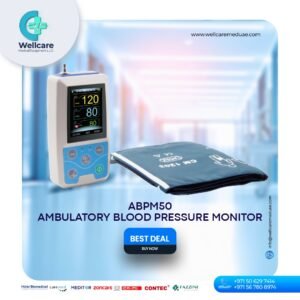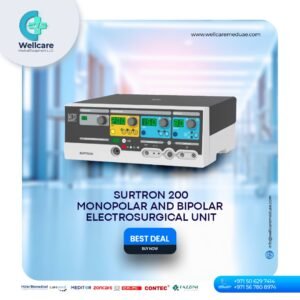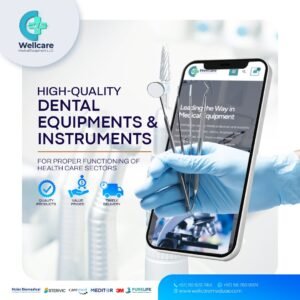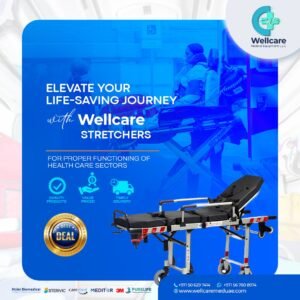cardiology equipment supplier in Ethiopia
Cardiology equipment is vital in Ethiopia for the early detection, diagnosis, and treatment of cardiovascular diseases, which are a leading cause of mortality. By providing accurate and timely assessments through tools like ECG machines, echocardiograms, and defibrillators, these technologies enhance the quality of cardiac care, reduce the risk of severe complications, and improve patient outcomes. Additionally, they support the healthcare system by enabling preventive measures and efficient management of heart conditions, ultimately leading to better public health and reduced healthcare costs.
Cardiology equipment plays a crucial role in the healthcare system of Ethiopia, significantly impacting the diagnosis, treatment, and management of cardiovascular diseases (CVDs). Here’s a detailed explanation of its importance:
1. Diagnosis and Early Detection
Electrocardiograms (ECG/EKG) Machines:
- Importance: Essential for detecting arrhythmias, myocardial infarctions, and other cardiac abnormalities.
- Impact: Early diagnosis allows for timely interventions, which can prevent complications and improve patient outcomes.
Echocardiograms:
- Importance: Provides detailed images of the heart, helping diagnose structural and functional heart problems.
- Impact: Non-invasive and crucial for diagnosing conditions like valve disorders, congenital heart defects, and cardiomyopathies.
2. Treatment and Management
Defibrillators:
- Importance: Life-saving devices used to treat sudden cardiac arrest.
- Impact: Availability in hospitals and public spaces can significantly reduce mortality rates from cardiac arrest.
Pacemakers:
- Importance: Regulate heartbeats in patients with bradycardia or heart block.
- Impact: Improves quality of life and reduces the risk of heart failure and other complications.
Cardiac Catheterization Equipment:
- Importance: Used for diagnostic and therapeutic procedures like angioplasty and stent placement.
- Impact: Minimally invasive interventions can restore blood flow in blocked arteries, reducing the need for open-heart surgery.
3. Monitoring and Follow-up
Holter Monitors:
- Importance: Allows continuous monitoring of heart activity over an extended period.
- Impact: Helps in detecting intermittent arrhythmias and evaluating the effectiveness of ongoing treatments.
Blood Pressure Monitors:
- Importance: Critical for managing hypertension, a major risk factor for CVDs.
- Impact: Regular monitoring helps in controlling blood pressure, reducing the risk of strokes and heart attacks.
4. Prevention and Awareness
Stress Test Systems:
- Importance: Assess how the heart functions under stress, identifying potential issues before they become critical.
- Impact: Encourages preventive measures and lifestyle changes to reduce the risk of developing severe heart conditions.
5. Healthcare System Enhancement
Improved Diagnosis and Treatment Capacities:
- Importance: Modern cardiology equipment enhances the diagnostic and therapeutic capabilities of healthcare facilities.
- Impact: Reduces patient mortality and morbidity rates, improving overall public health.
Training and Skill Development:
- Importance: Using advanced cardiology equipment requires specialized training for healthcare professionals.
- Impact: Elevates the skill levels of medical staff, contributing to better patient care and more efficient healthcare delivery.
6. Addressing the Burden of Cardiovascular Diseases
Rising Incidence of CVDs:
- Importance: Cardiovascular diseases are a leading cause of death globally, and Ethiopia is no exception.
- Impact: Adequate cardiology equipment is vital to address the growing burden of CVDs, which are often linked to lifestyle changes, urbanization, and aging populations.
7. Economic and Social Benefits
Cost-Effective Care:
- Importance: Early diagnosis and intervention can prevent the need for more extensive and expensive treatments later.
- Impact: Reduces healthcare costs for both patients and the healthcare system, freeing up resources for other needs.
Improved Quality of Life:
- Importance: Effective management of heart conditions allows patients to lead healthier, more productive lives.
- Impact: Enhances overall community well-being and reduces the economic burden of disease on families and society.
In summary, cardiology equipment is indispensable for Ethiopia’s healthcare system, enhancing the capacity to diagnose, treat, and manage cardiovascular diseases effectively. Investing in these technologies and ensuring proper training for healthcare professionals can lead to significant improvements in public health and overall quality of life.




